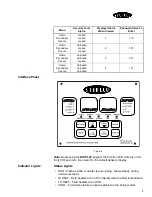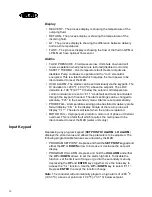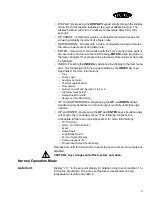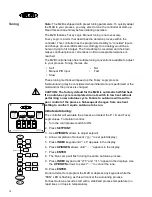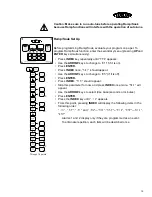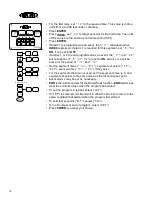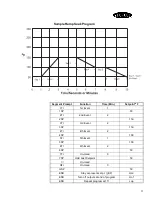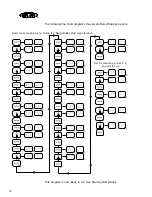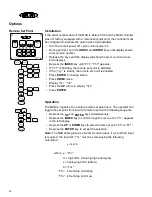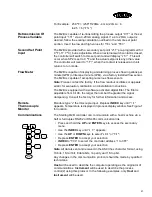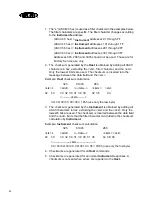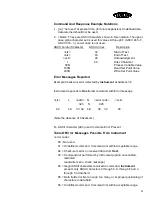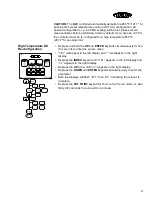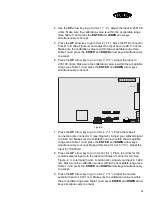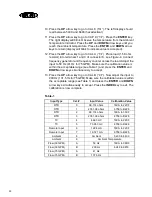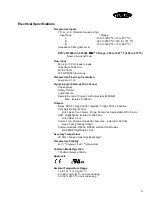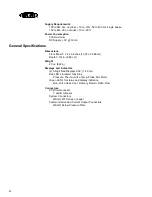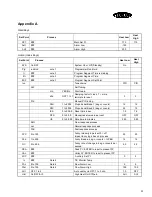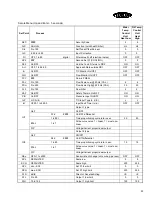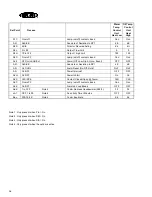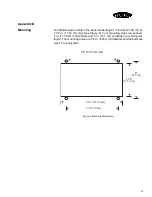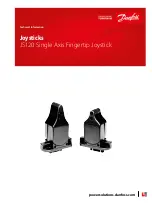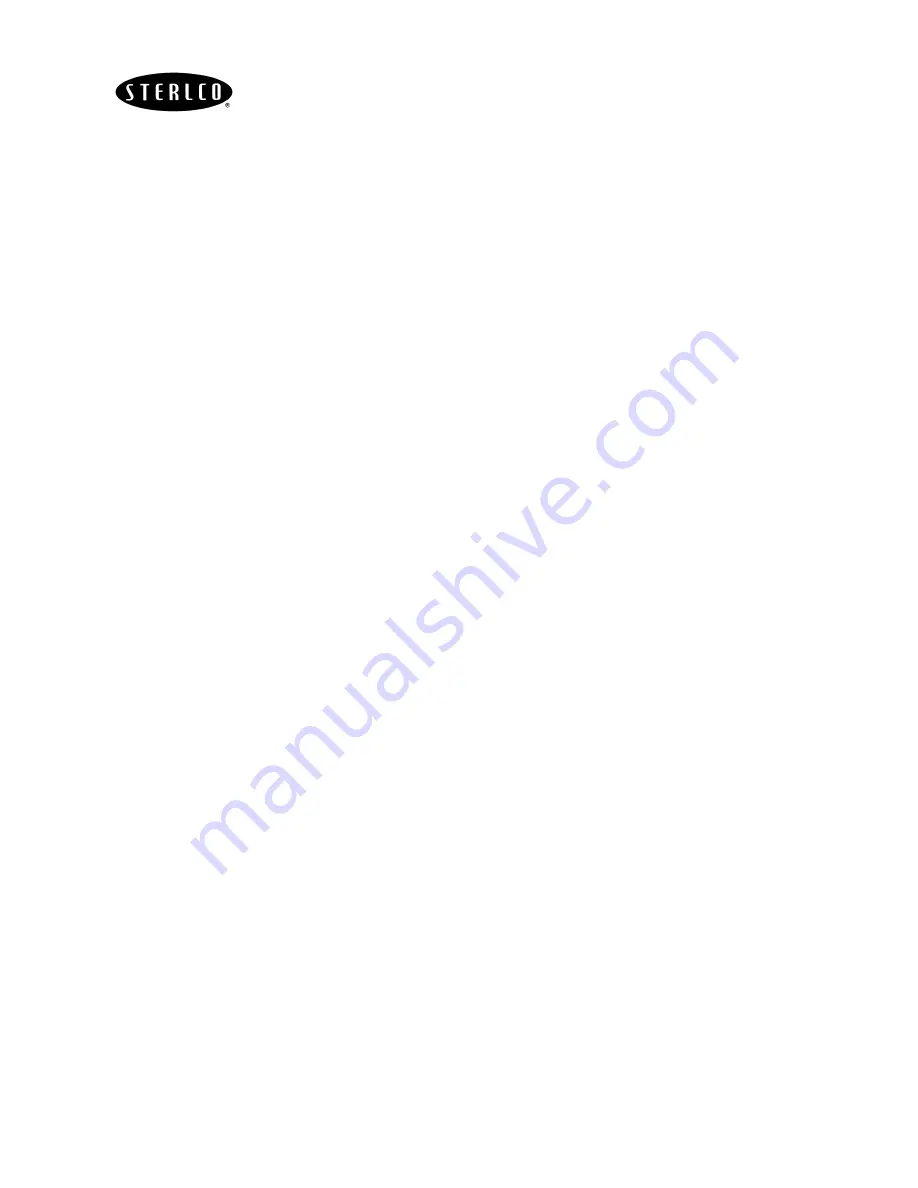
22
1. The “L” (ASCII 4C hex) is used as a filter character in the examples below.
The filter characters are specific. The filter character changes according
to the Instrument’s address.
(ASCII 4C hex) = Instrument addresses 01 through FF
(ASCII 4F hex) = Instrument addresses 101 through 1FF
(ASCII 56 hex) = Instrument addresses 201 through 2FF
(ASCII 43 hex) = Instrument addresses 301 through 3FF
Addresses 00h, 200h and 300h should not be used. These are for
Factory Service use only.
2. The checksum generated by the Host is obtained by adding all ASCII
characters in hex, excluding the <stx>, filter character, and the <etx>.
Only the lowest 8 bits are used. The checksum is inserted into the
message between the data field and the <etx>.
Example: Host checksum calculation
32h
0100h
26h
<stx> L
<addr>
<---data--->
<cksm>
<etx>
02
4C
33 32 30 31 30 30
32 36
03
<----------cksm-------->
33+32+30+31+30+30
=
126h (use only the low byte)
3. The checksum generated by the Instrument is obtained by adding all
ASCII characters in hex, excluding the <stx> and the <ack>. Only the
lowest 8 bits are used. The checksum is inserted between the data field
and the <ack>. Note that the filter character is included in the checksum
calculation by Instrument.
Example: Instrument checksum calculation
32h
0100h
26h
<stx> L
<addr>
<---data--->
<cksm> <ack>
02
4C
33 32 30 31 30 30 31 35
44 38 06
<-------------------cksm------------------->
4C+33+32+30+31+30+30 +31+35 = 1D8h (use only the low byte)
4. Checksums are generated for all Host commands
5. Checksums are generated for all normal Instrument responses. A
checksum is not sent when errors are reported to the Host.
Summary of Contents for M2B
Page 1: ... Rev A ...
Page 49: ...48 ...


